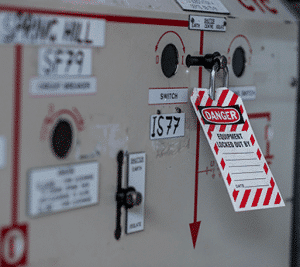Roar Solutions - Truths
Wiki Article
How Roar Solutions can Save You Time, Stress, and Money.
Table of ContentsNot known Facts About Roar SolutionsRoar Solutions - TruthsRoar Solutions Fundamentals Explained
In such an ambience a fire or explosion is feasible when 3 fundamental problems are satisfied. This is typically referred to as the "hazardous area" or "burning" triangle. In order to safeguard setups from a possible surge a technique of evaluating and identifying a possibly dangerous area is needed. The purpose of this is to make sure the right selection and installation of equipment to eventually prevent an explosion and to make sure safety of life.
(https://pagespeed.web.dev/analysis/https-training-roarsolution-com-au/mm9wy036rp?form_factor=mobile)
No tools ought to be installed where the surface temperature of the tools is higher than the ignition temperature of the given risk. Below are some usual dust harmful and their minimal ignition temperature level. Coal Dust 380C 225C Polythene 420C (melts) Methyl Cellulose 420C 320C Starch 460C 435C Flour 490C 340C Sugar 490C 460C Grain Dust 510C 300C Phenolic Resin 530C > 450C Aluminium 590C > 450C PVC 700C > 450C Soot 810C 570C The likelihood of the danger being existing in a concentration high adequate to cause an ignition will differ from area to area.
In order to classify this danger an installation is split right into locations of risk depending upon the amount of time the dangerous is present. These locations are referred to as Zones. For gases and vapours and dusts and fibers there are 3 areas. Zone 0 Area 20 A harmful ambience is extremely likely to be present and may exist for extended periods of time (> 1000 hours each year) or even continually Zone 1 Area 21 A dangerous ambience is possible but unlikely to be present for extended periods of time (> 10 450 C [842 F] A classification of T6 suggests the minimum ignition temperature level is > 85 C [185 F] Harmful area electric tools possibly developed for use in higher ambient temperatures. This would certainly suggested on the rating plate e.g. EExe II C T3 Ta + 60C( This suggests at 60C ambient T3 will not be gone beyond) T1 T1, T2, T3, T4, T5, T6 T2 T2, T3, T4, T5, T6 T3 T3, T4, T5, T6 T4 T4, T5, T6 T5 T5, T6 T6 T6 A T Class rating of T1 indicates the optimum surface area temperature level generated by the instrument at 40 C is 450 C. Thinking the connected T Course and Temperature ranking for the devices are appropriate for the area, you can constantly utilize a tool with an extra rigid Department score than required for the area. There isn't a clear solution to this concern however. It really does depend upon the type of devices and what repairs require to be performed. Tools with particular test treatments that can't be executed in the field in order to achieve/maintain 3rd party rating. Must come back to the manufacturing facility if it is prior to the equipment's solution. Area Repair Service By Authorised Personnel: Difficult screening may not be needed however certain treatments might need to be followed in order for the devices to preserve its 3rd event rating. Authorised workers must be used to perform the work properly Repair work must be a like for like replacement. New component need to be taken into consideration as a direct substitute needing no unique screening of the tools after the repair service is full. Each tool with an unsafe ranking should be assessed separately. These are detailed at a high degree listed below, however, for more comprehensive info, please refer directly to the standards.
The Greatest Guide To Roar Solutions
The devices register is a thorough data source of equipment documents that consists of a minimum set of fields to determine each thing's area, technological specifications, Ex category, age, and ecological data. This details is vital for monitoring and handling the tools efficiently within unsafe areas. In comparison, for periodic or RBI tasting evaluations, the quality will be a combination of In-depth and Close inspections. The ratio of Comprehensive to Shut evaluations will certainly be determined by the Equipment Danger, which is assessed based on ignition danger (the chance of a source of ignition versus the possibility of a flammable environment )and the harmful area classification( Area 0, 1, or 2). This variant will certainly additionally affect the resourcing demands for work prep work. As soon this page as Whole lots are defined, you can establish tasting plans based upon the example dimension of each Great deal, which describes the variety of random devices items to be checked. To identify the required example dimension, 2 elements require to be reviewed: the dimension of the Great deal and the classification of examination, which indicates the degree of initiative that must be used( minimized, typical, or boosted )to the assessment of the Great deal. By integrating the classification of evaluation with the Great deal size, you can then develop the ideal denial standards for a sample, suggesting the allowed number of damaged things discovered within that example. For more details on this procedure, please refer to the Energy Institute Guidelines. The IEC 60079 basic advises that the optimum period between inspections ought to not exceed 3 years. EEHA assessments will certainly likewise be conducted beyond RBI projects as part of arranged upkeep and equipment overhauls or repair work. These examinations can be credited towards the RBI sample dimensions within the influenced Whole lots. EEHA examinations are carried out to identify mistakes in electric devices. A heavy racking up system is important, as a solitary tool might have several faults, each with varying degrees of ignition danger. If the combined score of both examinations is much less than twice the mistake score, the Whole lot is regarded acceptable. If the Whole lot is still thought about inappropriate, it has to go through a full assessment or validation, which may cause stricter assessment protocols. Accepted Great deal: The sources of any kind of faults are recognized. If a typical failing mode is found, extra equipment may require maintenance. Mistakes are categorized by severity( Security, Honesty, Home cleaning ), guaranteeing that urgent concerns are evaluated and dealt with quickly to alleviate any type of effect on security or operations. The EEHA data source need to track and tape-record the lifecycle of mistakes together with the rehabilitative activities taken. Implementing a durable Risk-Based Examination( RBI )method is essential for making certain conformity and safety in managing Electric Tools in Hazardous Areas( EEHA) (hazardous area course). Automated Mistake Rating and Lifecycle Administration: Easily handle mistakes and track their lifecycle to improve assessment precision. The introduction of this support for risk-based assessment additionally enhances Inspectivity's placement as a best-in-class solution for governing conformity, along with for any asset-centric assessment use case. If you have an interest in discovering more, we invite you to request a demo and discover how our remedy can change your EEHA management procedures.
Roar Solutions for Beginners

In regards to eruptive threat, an unsafe area is a setting in which an eruptive ambience exists (or might be anticipated to be present) in quantities that need unique safety measures for the building and construction, installation and use devices. hazardous area electrical course. In this short article we explore the difficulties dealt with in the work environment, the danger control measures, and the required competencies to work safely
It is a consequence of modern life that we make, save or take care of a series of gases or fluids that are regarded flammable, and a variety of dusts that are regarded combustible. These compounds can, in specific problems, form explosive environments and these can have major and unfortunate effects. A lot of us are familiar with the fire triangular eliminate any kind of among the three components and the fire can not happen, however what does this mean in the context of unsafe areas? When breaking this down into its easiest terms it is essentially: a mix of a certain amount of launch or leak of a certain compound or material, blending with ambient oxygen, and the presence of a resource of ignition.
In a lot of circumstances, we can do little regarding the levels of oxygen airborne, yet we can have substantial impact on sources of ignition, as an example electric tools. Unsafe locations are documented on the harmful location category illustration and are recognized on-site by the triangular "EX-SPOUSE" indicator. Below, amongst other essential information, zones are divided into three types depending on the risk, the probability and period that an explosive atmosphere will certainly exist; Area 0 or 20 is deemed one of the most unsafe and Area 2 or 22 is deemed the least.
Report this wiki page